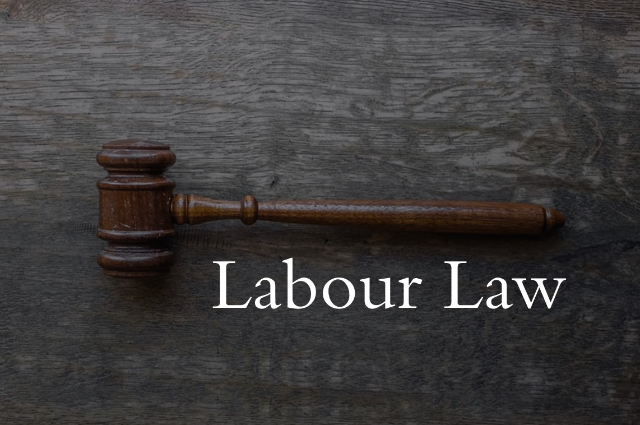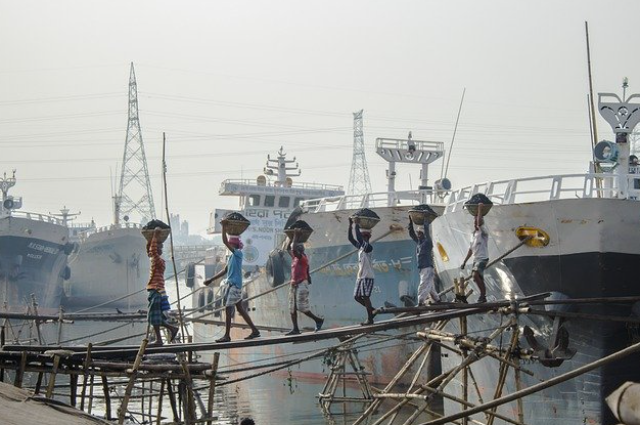
Meaning of Labour:-
Physical labour is an example of labour. Labour is the British form of the word labour, which is defined as work. Labour refers to the work done by a group of employees or by a single worker. Every individual should be compensated fairly for the fruits of his labour.
Human Labour:-
Labor is the use of the physiological processes and expressions of human existence as a tool. It is not labour; it is simply life to display the potentialities of human energy and vital processes that the man whose life they manifest does not use for external ends other than the simple running of these processes and the physiological role they play in the biological consummation of his own vital economy. Man tries to relieve anxiety by utilizing his powers and talents and replacing deliberate exploitation of his vital energies for the spontaneous and carefree discharge of his faculties and nerve tensions.

Image by Shourav Sheikh from Pixabay
Every human has a finite amount of energy to expend, and each unit of effort can only have a finite impact. Otherwise, human work would be plentiful; it would not be rare, and it would not be viewed as a way of alleviating anxiety and therefore economized.
Importance of Labour:-
Individuals like you and me want products and services, and companies offer those commodities and services in many of the marketplaces we encounter. The labour market operates in a similar manner, except the roles are reversed. Firms want labour, and individuals like you and me offer that labour in the labour market.
Employers require labour because employees are an essential component of the manufacturing process. Workers convert inputs into outputs with the use of tools and equipment. Employers couldn't create goods or services and make money if they didn't have workers. The demand for labour, like the demand for other commodities and services, exhibits a decreasing slope when graphed. This suggests that lower-priced labour is in higher demand than higher-priced labour. That is, businesses are ready to acquire more hours of work at lower salaries than at higher wages in the labour market.

Image by Janno Nivergall from Pixabay
Introduction of Labour Laws in India:-
The set of laws, administrative judgments, and precedents that address the legal rights and constraints of working people and their organizations is known as labour law. As a result, it serves as a go-between for trade unions, companies, and employees on a variety of issues.
The Labour Law is a mechanism that promotes both worker empowerment and protection. It governs both individual and group employment relationships. Constitutional law, the civil code, the penal code, and the transnational ILO (International Labour Organization) Conventions are all significant pieces of legislation.
The goal of labour law is to balance the power between the worker and the employer, to prohibit the employer from dismissing a worker without reason, and to establish and maintain systems that recognize employees as "equal" players in talks concerning their working conditions, among other things.
Labour law tries to avoid a race to the bottom by limiting contracting partners' flexibility to contract on their own terms and establishing minimum safety and wage requirements.
Labour law also controls the labour market: a government may opt to enact legislation setting maximum or minimum pay or working-hour restrictions, either nationally or in specific industries or sectors.
To put it another way, labour law establishes the rights and responsibilities of employees, union members, and employers in the workplace. In general, labour law includes the following:
- Certification of unions, labor-management interactions, collective bargaining, and unfair labour practices are all aspects of industrial relations;
- Workplace health and safety;
- Holidays, annual leave, working hours, unjust dismissals, minimum salary, layoff processes, and severance compensation are all covered by employment regulations.

Image by Peggy und Marco Lachmann-Anke from Pixabay
Categories of Labour Law in India:-
Labor law is divided into two areas. To begin, collective labour law refers to the three-part relationship that exists between an employee, an employer, and a union. Individual labour law, on the other hand, is concerned with employees' rights at work and via their employment contracts.
In the 19th and 20th centuries, the labour movement was crucial in creating legislation safeguarding workers' rights. Since the industrial revolution, labour rights have been a critical component of social and economic progress.
Evolution of Labour Law in India:-
In India, the legislation governing labour and employment is referred to as industrial law. In India, the history of labor regulation is intertwined with that of British colonialism. The British created industrial/ labor regulations largely to safeguard the interests of British businesses. Some of these early rules were inevitably shaped by considerations of the British political economy. The Factories Act was enacted as a result. It is widely known that Indian textile items competed fiercely with British textiles in the export market, and as a result, the Factories Act was initially established in 1883 in order to raise the cost of labour in India. As a result, India gained the first eight-hour workday, the eradication of child labour, the prohibition of women working at night, and the introduction of overtime pay for work beyond eight hours. While the policy had a demonstrable welfare impact, the true purpose was unmistakably protectionist.
The Trade Dispute Act of 1929 was the first Indian legislation to govern the interaction between an employer and his employees (Act 7 of 1929). This Act had provisions to limit strike and lockout powers, but there was no mechanism in place to handle disputes.
Because independent India demanded clear cooperation between labour and capital, the original colonial legislation underwent significant changes in the post-colonial era. The content of this partnership was unanimously approved in a tripartite conference in December 1947, in which it was agreed that labour would be given a fair wage and fair working conditions in exchange for capital's full cooperation in ensuring uninterrupted production and higher productivity as part of a national economic development strategy and that all parties involved would be kept informed. The Industrial Disputes Act (the Act), which replaced the Trade Disputes Act 1929 and went into effect on April 1, 1947, has been on the books ever since.
The legislations can be categorized as follows:-
- The Central Government enacts labour regulations, and the Central Government is solely responsible for enforcing them.
- Central government labour regulations are enacted and implemented by both the federal and state governments.
- The federal government enacts labour regulations, which are then implemented by state governments.
- State governments create and enforce labour rules that apply to their respective states.
The Indian Constitution gives forth specific protections for individuals' rights as well as the Directive Principles of State Policy, which provide a goal by which the state's operations should be governed. The following are the Directive Principles:-
- for ensuring the health and strength of employees, both men, and women;
- for ensuring that children's tender age is not exploited;
- for ensuring that citizens are not forced by economic necessity into vocations unsuited to their age or strength;
- for ensuring just and humane working conditions and maternity leave; and
- for ensuring that the Government takes steps, through appropriate legislation or other means, to securing the health and strength of employees, both men, and women.

